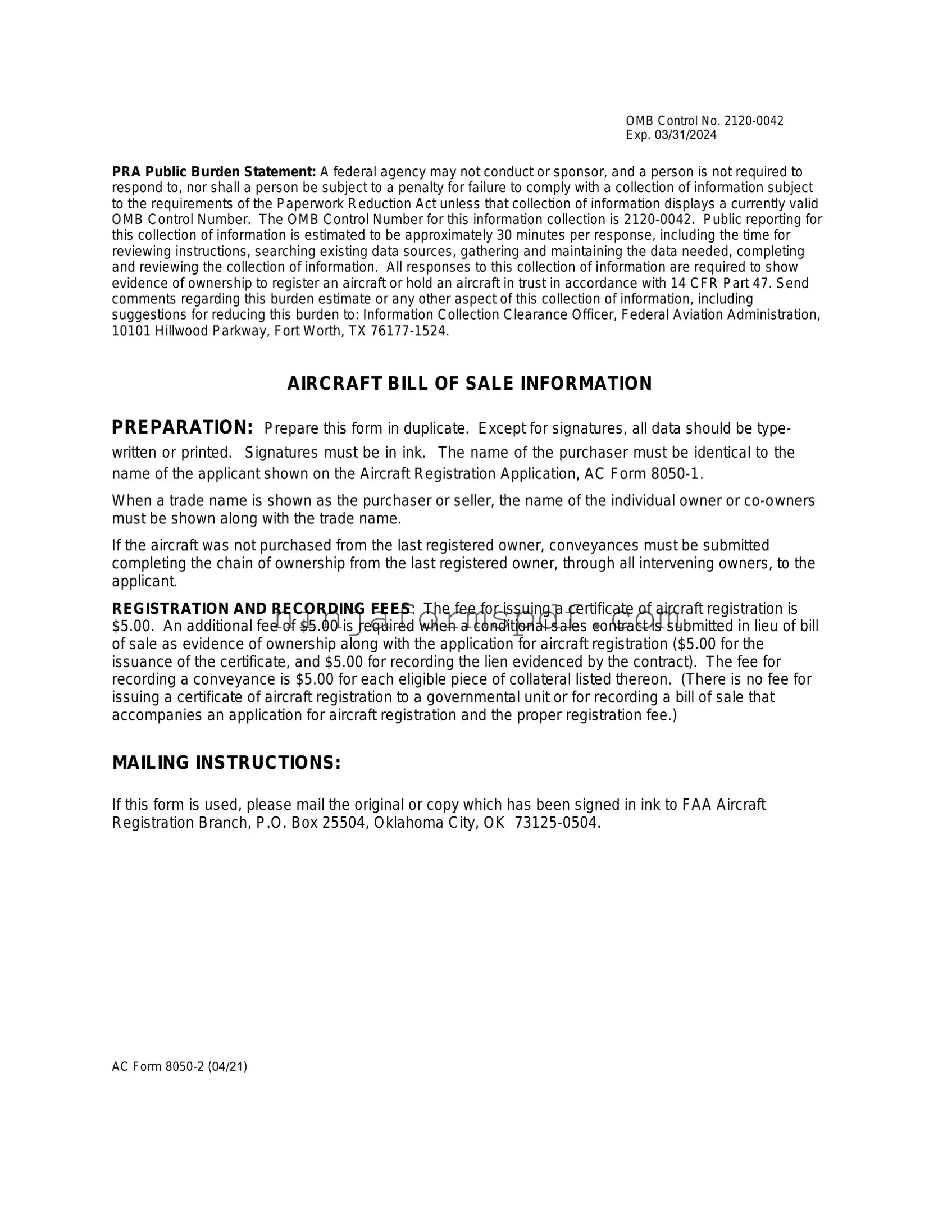What is the Aircraft Bill of Sale AC 8050-2 form?
The Aircraft Bill of Sale AC 8050-2 form serves as an official document that records the sale and transfer of an aircraft from one party to another. It is a critical document used in the United States for the documentation of the sale, providing all parties with a legal record of the transaction. This form is submitted to the Federal Aviation Administration (FAA) as part of the aircraft registration process.
Who needs to fill out the Aircraft Bill of Sale AC 8050-2 form?
Both the seller and the buyer of the aircraft are required to properly fill out the Aircraft Bill of Sale AC 8050-2 form. The seller's information, aircraft details, and the terms of the sale are included in the form, making it necessary for both parties to review and ensure all information is accurate and complete.
Where can I find the Aircraft Bill of Sale AC 8050-2 form?
The Aircraft Bill of Sale AC 8050-2 form can be obtained from the Federal Aviation Administration's official website. It is available for download in a printable format, allowing individuals to easily access and complete the form as required for their aircraft transaction.
What information is required on the form?
The form requires comprehensive information about the sale, including the names and addresses of both the buyer and seller, the make and model of the aircraft, the aircraft's serial number, the sale date, and the sale price. Accurate and complete information is vital for the form to be processed smoothly by the FAA.
Is there a fee to submit the Aircraft Bill of Sale AC 8050-2 form?
While the form itself does not have a fee, the process of registering an aircraft with the FAA, which includes submitting the completed Aircraft Bill of Sale, may involve certain fees. It is recommended to check the latest fee schedule on the FAA's website or contact them directly for the most current information regarding aircraft registration fees.
How do I submit the completed form?
After filling out the Aircraft Bill of Sale AC 8050-2 form with all the required information, it should be submitted to the Federal Aviation Administration as part of the broader aircraft registration process. The form can be mailed to the FAA's Aircraft Registration Branch. For the exact mailing address and any submission guidelines, please refer to the FAA's website or contact their customer service.
How long does it take for the form to be processed?
The processing time for the Aircraft Bill of Sale AC 8050-2 form can vary depending on the current workload of the FAA's Aircraft Registration Branch. Generally, it may take several weeks for the form to be processed and for the transaction to be officially recorded. For the most accurate processing times, contacting the FAA directly is advisable.
What happens if the form is filled out incorrectly?
If the Aircraft Bill of Sale AC 8050-2 form is not filled out correctly, it may be returned to the sender for revisions, delaying the aircraft registration process. To prevent delays, it is crucial to carefully review all information for accuracy and completeness before submission. If you have questions or need assistance filling out the form, contacting the FAA for guidance is recommended.

